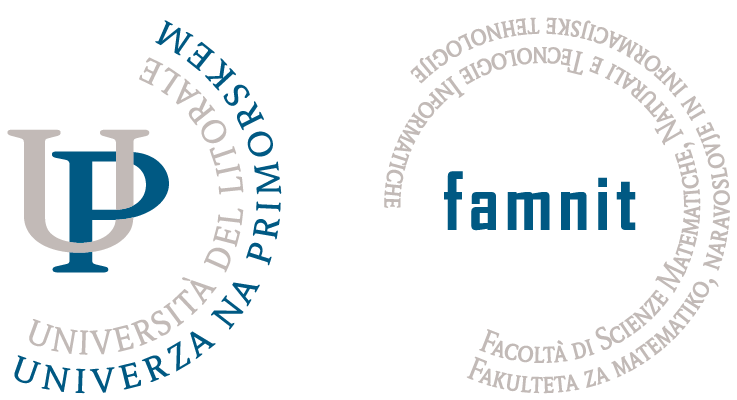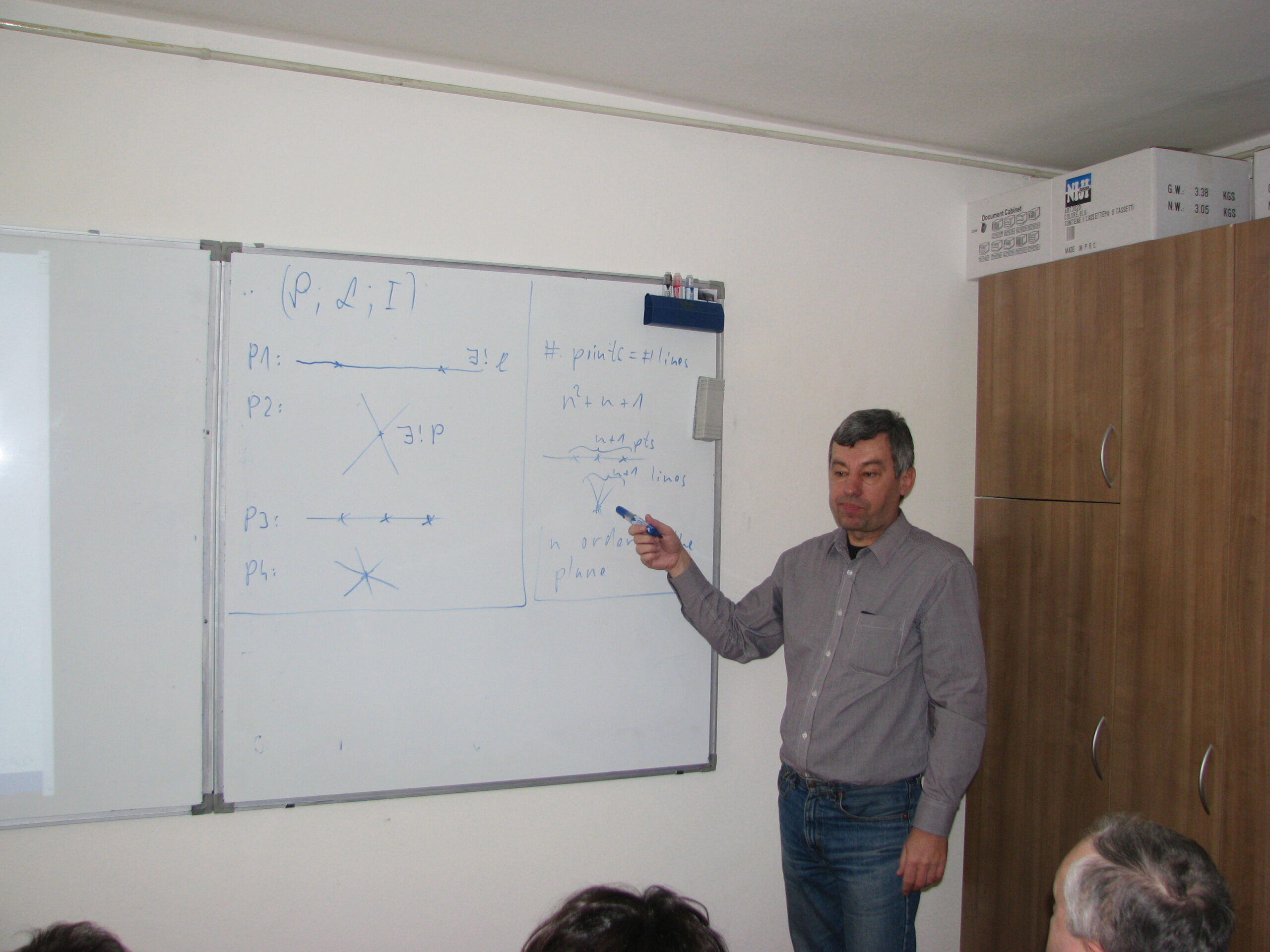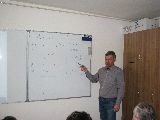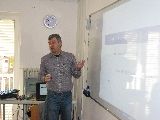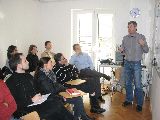16.01.2012 Lecturer: dr. Gyorgy Kiss (Eötvös Loránd University, Budapest).
Title: Semiarcs and semiovals in PG(2, q)
Abstract : Ovals, k-arcs and semiovals of finite projective planes are not only interesting geometric structures, but they have important applications to coding theory and cryptography, too. Semiarcs are the natural generalizations of arcs. Let Πq be a projective plane of order q. A non-empty pointset St ⊂ Πq is called a t-semiarc if for every point P ∈ St there exist exactly t lines 1 , 2 , . . . t such that St ∩ i = {P } for i = 1, 2, . . . , t. These lines are called the tangents to St at P. The classical examples of semiarcs are the semiovals (t = 1) and the subplanes (t = q − m, where m is the order of the subplane.) In this talk we consider those semiarcs in PG(2, q), which are contained in the union of three concurrent lines. Applying theorems coming from additive group theory, we prove bounds on the sizes of these semiarcs and construct new examples. We investigate strong semiovals, too. For p prime, the complete classification of strong semiovals in PG(2, p2 ), and the proof of the nonexistence of these objects in PG(2, p) was given in [?]. We extend these results for arbitrary powers of p. In particular we prove that there is no strong semioval in PG(2, p2r+1 ) if p > 7, and prove that the size of each strong semioval in PG(2, p2r ) is 3(p2r − pr ).
